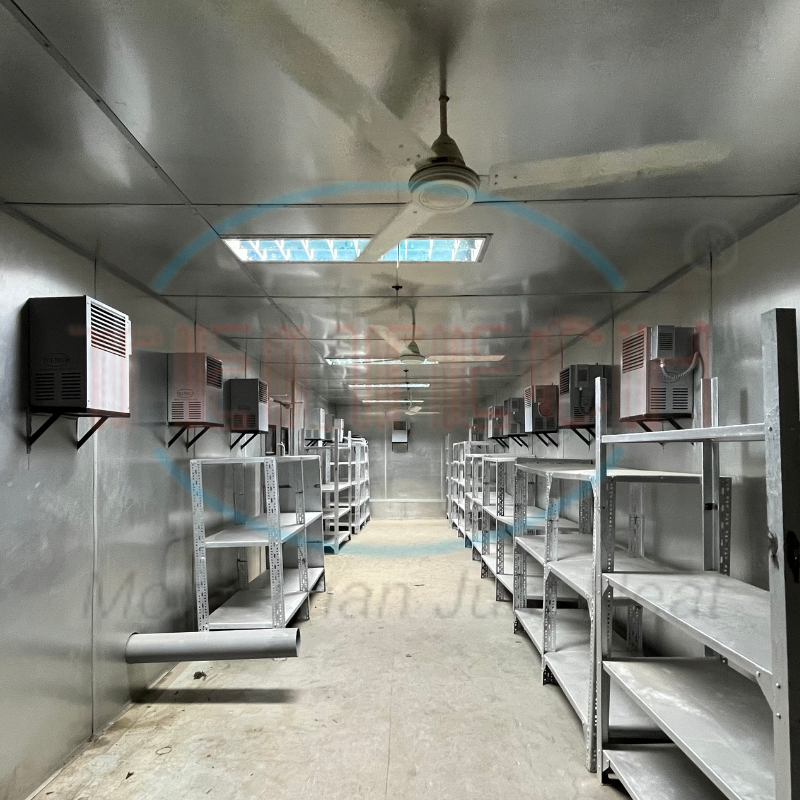
A Burn-In Chamber is a specialized testing environment used to evaluate the reliability and durability of electronic components, assemblies, and devices under sustained operational stress. By exposing products to elevated temperatures, electrical loads, and prolonged operational cycles, Burn-In Chambers help identify potential early-life failures, ensuring only robust, high-quality products reach the market. These chambers are essential in industries like electronics, automotive, aerospace, and medical devices where operational reliability is critical.
The primary goal of burn-in testing is to simulate real-world operating conditions, identify design flaws, and predict the lifespan of a product. By applying accelerated stress tests, manufacturers can reduce the risk of failure in the field, meet industry standards, and ensure customer satisfaction.
Temperature Control: Precise control of temperature ranging from 40°C to +150°C (customizable as per requirements).
Humidity Control: Optional humidity control to simulate harsh environmental conditions.
Electrical Load Application: Capability to supply electrical current to devices under test (DUTs) for real-time stress testing.
Customizable Racks and Fixtures: Adjustable racks for efficient use of space to accommodate various sizes and shapes of DUTs.
Safety Mechanisms: Overheat protection, emergency shutdown, and alarm notifications.
Data Logging and Monitoring: Real-time monitoring and data logging for test analysis and documentation.
Energy Efficiency: Optimized design for low power consumption and energy efficiency.
Modular Design: Scalable capacity options to meet different production requirements.
Electronics & Semiconductor Industry: Testing of PCBs, integrated circuits (ICs), resistors, capacitors, and microprocessors.
Automotive: Stress testing of electronic control units (ECUs), sensors, and automotive electronics.
Aerospace & Defence: Reliability assessment of avionics and mission-critical components.
Medical Devices: Testing medical devices to ensure uninterrupted operation in critical conditions.
Telecommunications: Burn-in testing of network infrastructure devices, modems, and routers.
| Specification | Details |
|---|---|
| Model | Customizable (Standard & Custom Models Available) |
| Temperature Range | 40°C to +150°C (Custom Ranges on Request) |
| Temperature Accuracy | ±1°C at steady state conditions |
| Temperature Uniformity | ±2.0°C (Depending on load and air circulation) |
| Heating Rate | Up to 5°C per minute (customizable) |
| Chamber Size | Custom sizes available (Small, Medium, Large, Walk-In) |
| Load Capacity | Varies from 50 kg to 1000+ kg, depending on chamber size |
| Power Supply | 415 V / 3-Phase (Custom Voltage Available) |
| Controller Type | Thyristorized PID controller, PLC-based, Touchscreen HMI Interface |
| Electrical Loading | Configurable DC/AC Load (Based on DUT Requirements) |
| Test Slots | Multiple slots to house devices under test (DUTs) |
| Safety Features | Emergency stop, overheat protection, door interlock system |
| Data Logging | USB, Ethernet, and Remote Monitoring Capabilities |
| Compliance | ISO 9001:2015, CE, NABL and other industry standards |
| Construction Material | Stainless Steel, Aluminium, GI, GP colour coated (Interior), Powder-Coated Steel, GP colour coated (Exterior) |
| Noise Level | < 75 dB at full load |
| Warranty | 1 Year(Extended Warranty Available) |
| Optional Features | Remote Monitoring, IoT Integration, Custom Fixtures |